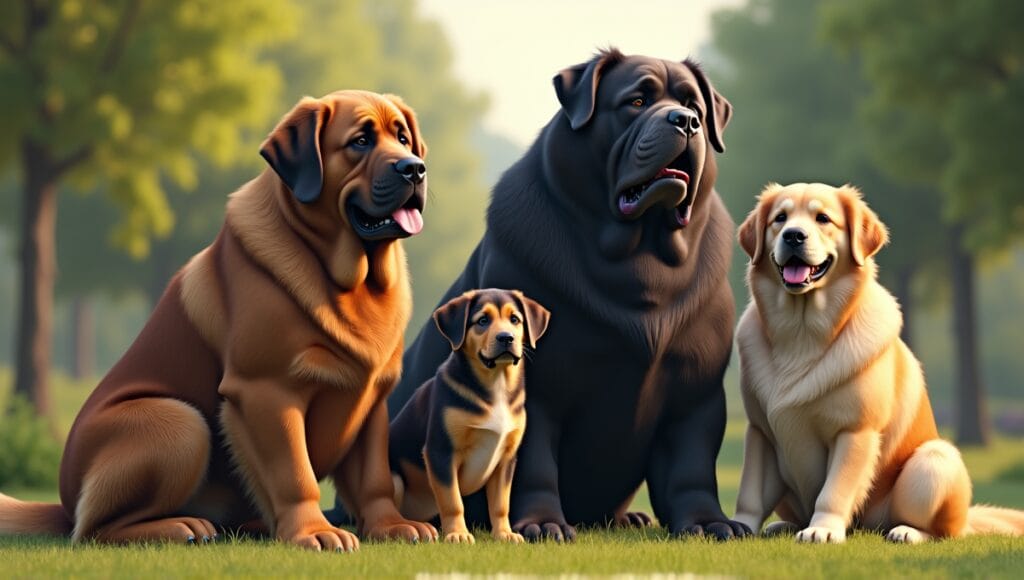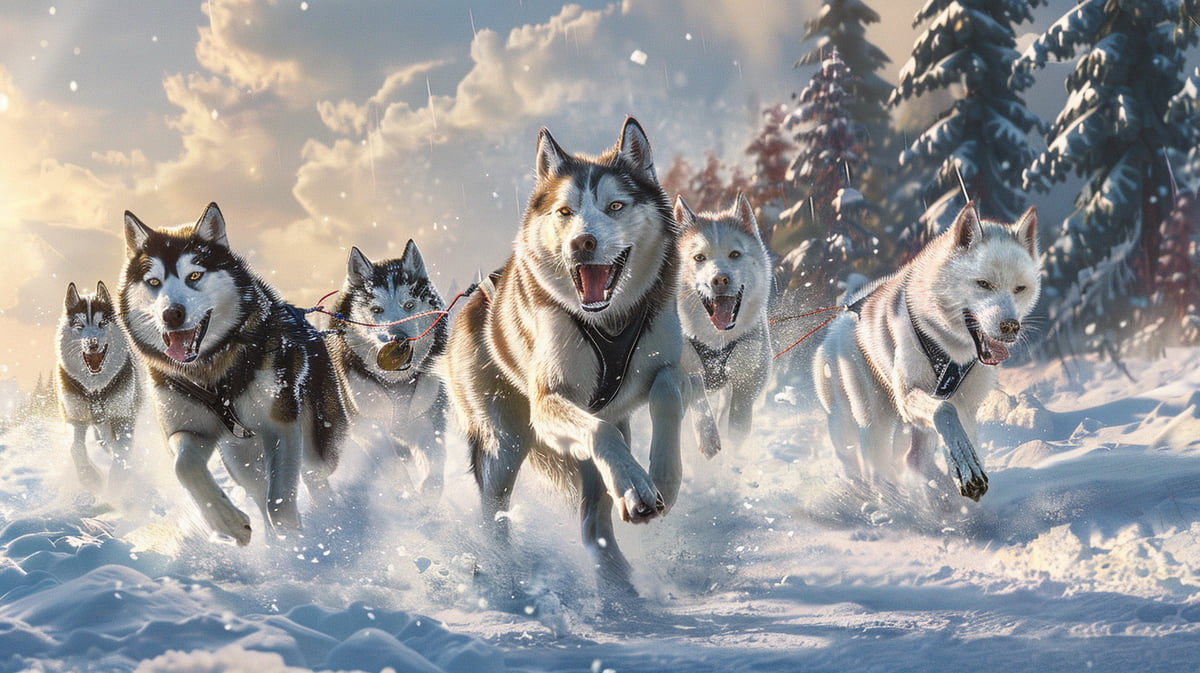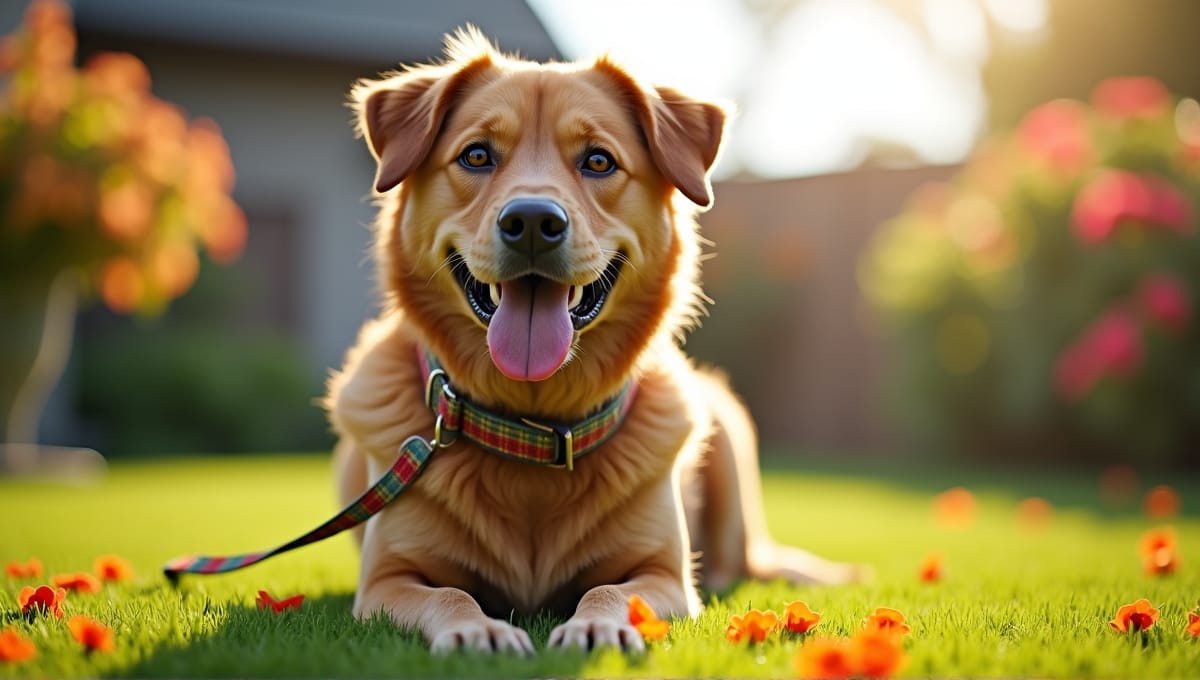Which Are The Biggest Dogs? As a lifelong dog lover, I’ve seen a few really big dogs. These breeds range from gentle giants to massive protectors. I’ll cover the top dogs, what makes each breed special, and how to take care of these large friends. So without further ado, let’s take a look at the heavyweight champions of the dog world!
Top 5 Heaviest Dog Breeds
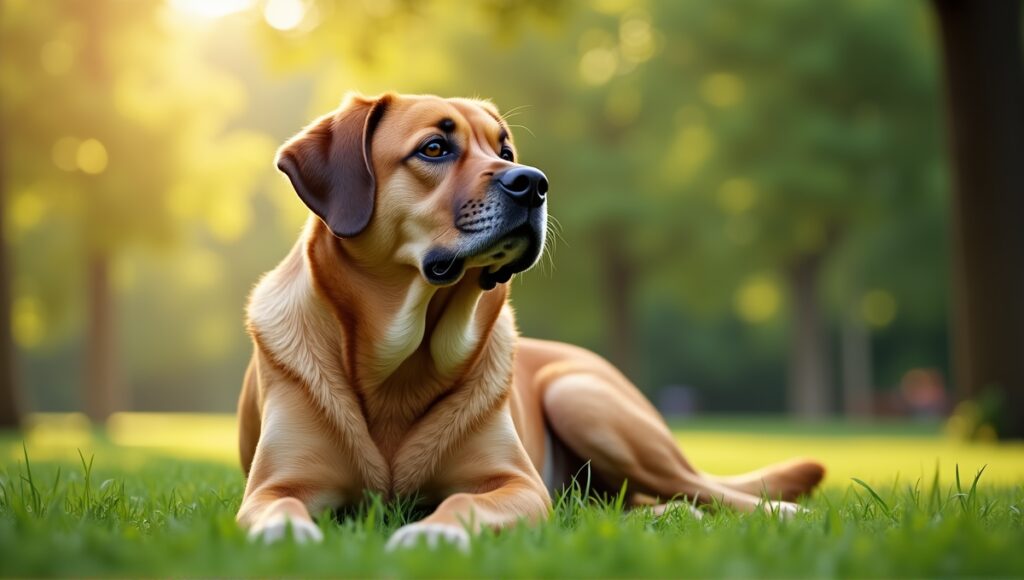
When it comes to large dogs, there are a few breeds that truly take the cake as giants. I’ve worked with many different dog breeds over the years, and I can attest to the fact that these massive dogs are truly something else. Here are the top 5 heaviest dog breeds.
- English Mastiff
- Average weight: 120-230 pounds
- Description: Massive head, wrinkled brow, muscular body
- Temperament: Gentle, loyal, calm
- History: An ancient breed that was once used in wars and as guard dogs
- Saint Bernard
- Average weight: 140-180 pounds
- Claim to fame: Known for their rescue work in the Alps, thick coat, and drooling
- Newfoundland
- Average weight: 100-150 pounds
- Claim to fame: Webbed feet (and excellent swimmers), sweet nature
- Great Dane
- Average weight: 110-175 pounds
- Nicknamed the “Apollo of Dogs” due to their majestic appearance
- Irish Wolfhound
- Average weight: 105-120 pounds
- Claim to fame: Tallest of all breeds
These dogs are massive, but size isn’t the only thing they have going for them. Each breed has its own personality and needs. If you’re thinking about adopting one of these giants, just keep in mind that they do need a lot of space, exercise, and food. Some of these breeds, like the Great Dane, are even considered among the biggest dog in world.
Understanding Size Classifications for Heavy Dog Breeds
Dog breeds vary significantly in size. The American Kennel Club (AKC) has set size classifications for dogs. Here they are:
- Toy: Up to 10 pounds
- Small: 10-25 pounds
- Medium: 25-50 pounds
- Large: 50-90 pounds
- Giant: Over 90 pounds
We will touch on the heavy size range. The large size group typically includes breeds that weigh 50-90 pounds. Then the giant size group encompasses breeds that weigh over 90 pounds, with some breeds even weighing 200 pounds or more!
Another size classification is height. Large breeds are usually 24-30 inches tall at the shoulder. Giant breeds are typically taller than 30 inches.
These classifications are helpful for standardizing breed descriptors. They also make it easier for breed descriptions to be compared, such as in dog show competitions. And they help people understand basic breed information. However, remember that every dog is an individual, and even within a breed weight can significantly vary. Some large breeds, like large poodle breeds, can fall into different size categories depending on their specific variety.
Health Considerations for Heavy Dog Breeds
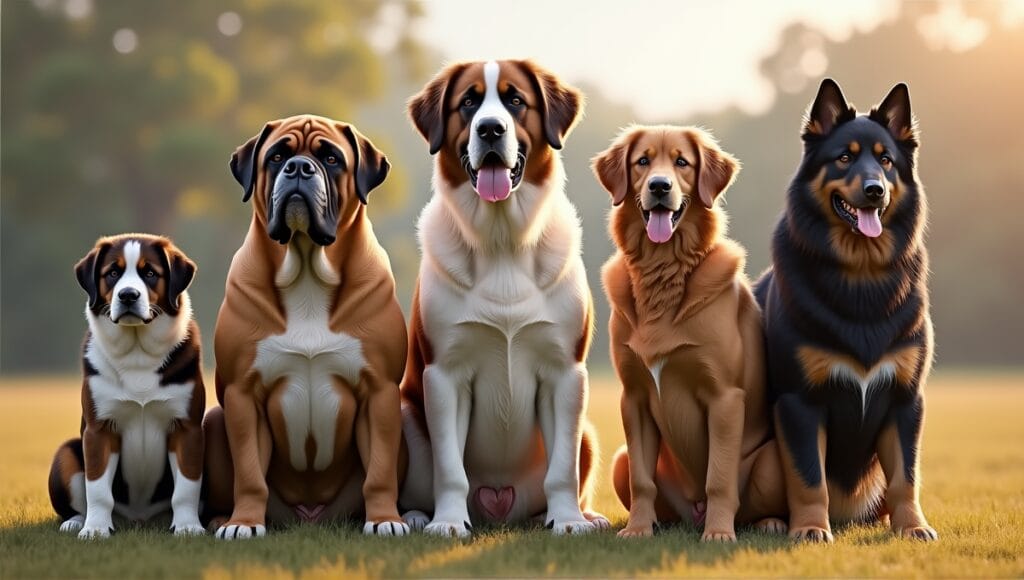
Owning a large dog breed comes with unique health concerns. Many of these problems are ones I’ve personally seen during my time working with dogs. Here are some common health issues:
- Hip dysplasia
- Elbow dysplasia
- Bloat (Gastric dilatation-volvulus)
- Heart issues
- Joint problems
All of these issues can impact the dog’s lifespan. Larger breeds tend to have shorter lifespans than smaller breeds. They usually live between 6 and 10 years.
The key to avoiding health issues is ensuring your dog gets plenty of regular exercise at a healthy weight and eats high-quality dog food. You should also:
Take your dog to the vet regularly
Watch for signs of discomfort or behavior changes
Consider joint supplements (ask your vet first)
Moderate your dog’s exercise, especially for puppies
Your veterinarian is your best friend if you want to ensure your large breed dog remains healthy. They can catch issues before they become serious, so don’t miss those check-ups!
Exercise Requirements for Heavy Dog Breeds
Large dogs require exercise. However, their exercise needs can vary. Here’s what you need to know:
- Daily exercise: 1-2 hours (break this up into multiple sessions)
- Exercise options:
- Walking
- Swimming (it’s great for their joints.)
- Fetch
- Tug of war
Regular exercise is important. It helps them maintain a healthy weight, prevents boredom, and helps build a stronger bond between you and your dog.
Consider their age. Puppies need short, frequent play sessions. Adult dogs can handle longer, more intense play sessions. Older dogs may only be able to handle gentle activities.
These dogs are also prone to overheating. For this reason, exercise them during the cooler parts of the day. Additionally, always bring water. Watch for signs of fatigue. While you want to ensure they’re getting enough exercise, their health and enjoyment should always be your main priority.
Nutritional Needs of Heavy Dog Breeds
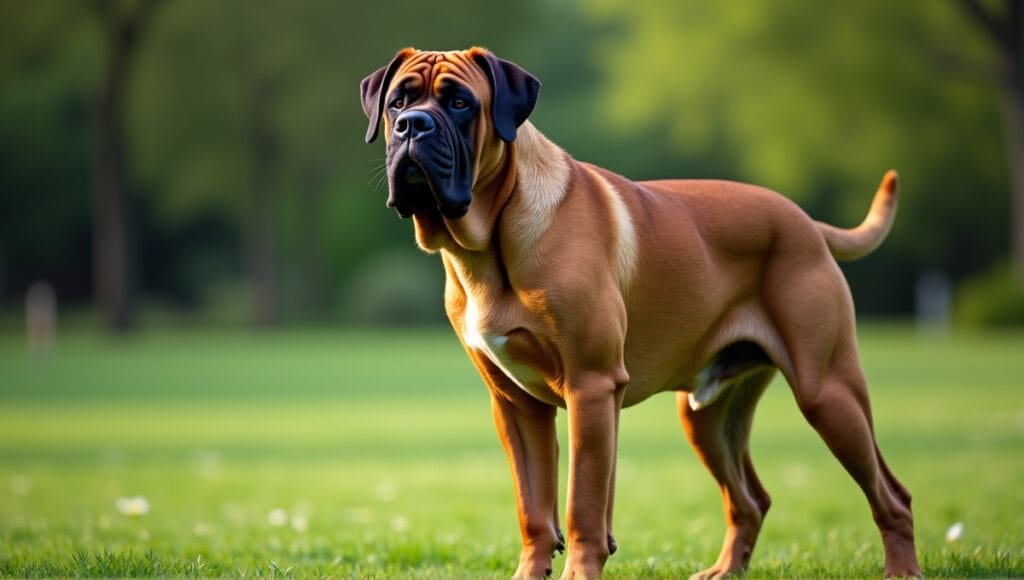
Feeding a large dog breed is not just about volume – it’s about quality and balance. Here’s what that means for you:
General nutritional needs:
High-quality protein for muscle preservation
Caloric control to avoid obesity
Glucosamine and chondroitin for joint preservation
Omega-3 fatty acids for skin, coat, and joint preservation
Puppy food:
Specific large breed puppy food
Controlled calcium to ensure proper bone development
Adult food:
Large breed adult food options
Portion control to prevent obesity
Changes in senior years:
Lower calorie food options
Higher fiber food options to support digestive health
Portion control is the most important piece of the puzzle, as obesity can lead to several health issues. It’s much better to keep your dog on the lean side, so prioritize portion control.
Always speak with your vet about your dog’s specific nutritional needs and work with them to develop a diet plan based on your dog’s age, size, and health status.
Cost Factors of Owning a Heavy Dog Breed
Owning a large dog is a big responsibility, and it’s also a big financial commitment. Here are the primary expenses to consider:
Food:
Higher food bill (they eat a lot)
Often require premium large breed formulas
Veterinary care:
More expensive due to their size
Medication will cost more money
Higher potential for health issues that are expensive to treat
Supplies and equipment:
Larger crates beds and toys
Heavy-duty leashes and collars
Grooming:
More expensive to have professionally groomed
More grooming products if you do it yourself
These expenses add up. You’ll incur significantly higher costs than you would with a small breed. Make sure you can afford these costs before bringing a gentle giant home. If you’re looking for a large breed that’s a bit easier on the wallet in terms of grooming, you might want to consider large dogs that dont shed.
Characteristics of the English Mastiff
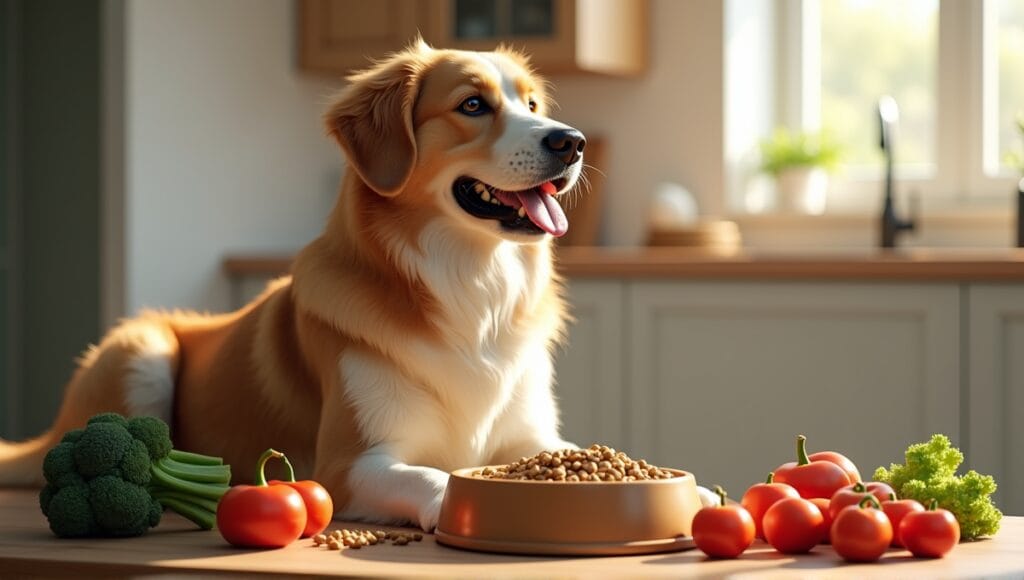
The English Mastiff is a heavyweight in every sense of the word. These dogs are colossal. Males weigh anywhere from 160 to 230 pounds, while females tip the scale at 120 to 170 pounds. The biggest dog to ever live was an English Mastiff named Zorba, who weighed in at a staggering 343 pounds!
Physically, these dogs are intimidating. They have a massive square head, a wide chest, and sturdy legs. Their coat is short and comes in fawn, apricot, or brindle.
Despite their massive size, Mastiffs are some of the gentlest dogs around. They’re famous for their laid-back, affectionate personalities. They’re also great with kids and very loyal to their family. However, they can exhibit protective instincts, so early socialization is key.
Mastiffs boast a long and fascinating history. They’ve been with us for thousands of years. The ancient Assyrians even used them during wartime. Later, the Romans brought Mastiffs to the UK, where they served as guard dogs. Today, of course, we know them as one of the best giant dog breeds for families. Some people even consider training them as guard dogs, although their gentle nature often makes them better suited as loving family companions.
These dogs are undeniably impressive. Just keep in mind that they require a lot of space, food, and overall care. So, if you’re thinking of adding a Mastiff to your family, be prepared for a very large commitment in all senses of the word.
To Conclude
I have many years of experience with heavy dog breeds, and they really are something else. These gentle giants require extra attention, but the affection they provide is priceless. You discovered their size, health issues, exercise needs, and dietary needs. Just keep in mind that keeping a heavy breed is a massive responsibility. It requires time, energy, and money. If you’re up for it, though, you’ll receive a faithful, affectionate friend that will bring plenty of love and happiness to your home.


